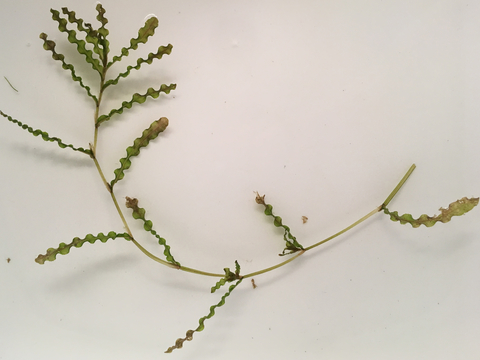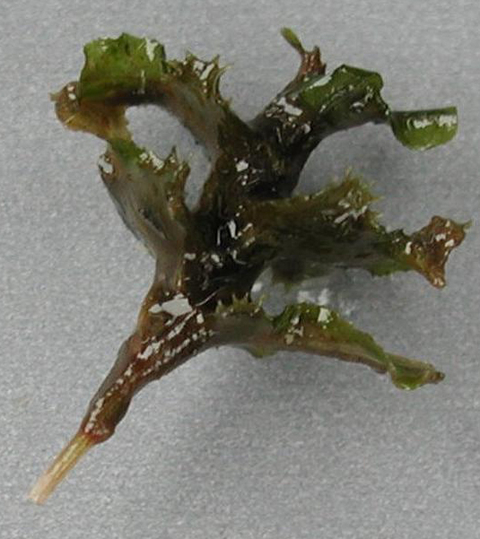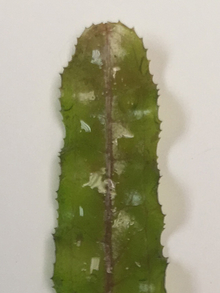Quick facts
Curly-leaf pondweed is a prohibited invasive species. It is illegal to possess, import, purchase, transport, or introduce these species (including hybrids or cultivars) except under a permit or statutory exemption. Transport directly to the Minnesota Department of Natural Resources in a sealed container for identification or reporting purposes is permitted.
- Curly-leaf pondweed winter buds (turions) sprout under the ice in late fall and early winter, allowing them to grow rapidly in the spring before native plant species are active.
- Dense surface mats can reduce light penetration and impede recreational activity.
Curly-leaf pondweed should be reported. See the Minnesota Department of Natural Resources recommendations for reporting invasive species.
How to identify curly-leaf pondweed
- Curly-leaf pondweed (Potamogeton crispus) is a submerged aquatic plant with lasagna-shaped leaves that can form dense mats at the water’s surface.
- Typically grows in waters up to 15 feet deep.
Leaves
- Simple, alternate leaves that are typically up to 3 inches long with a serrated margin and wavy edges.
- Leaves have an obvious midvein and rounded tips.
- Produces winter buds (called “turions”) at leaf axils with densely packed leaves that may resemble small pine cones.
Flowers
- Grow on short spikes about 1 inch tall, above the water.
- Flowers may appear reddish-brown to green.
Roots
- Vegetative reproduction via thick yellow to red rhizomes.
Reviewed in 2019




